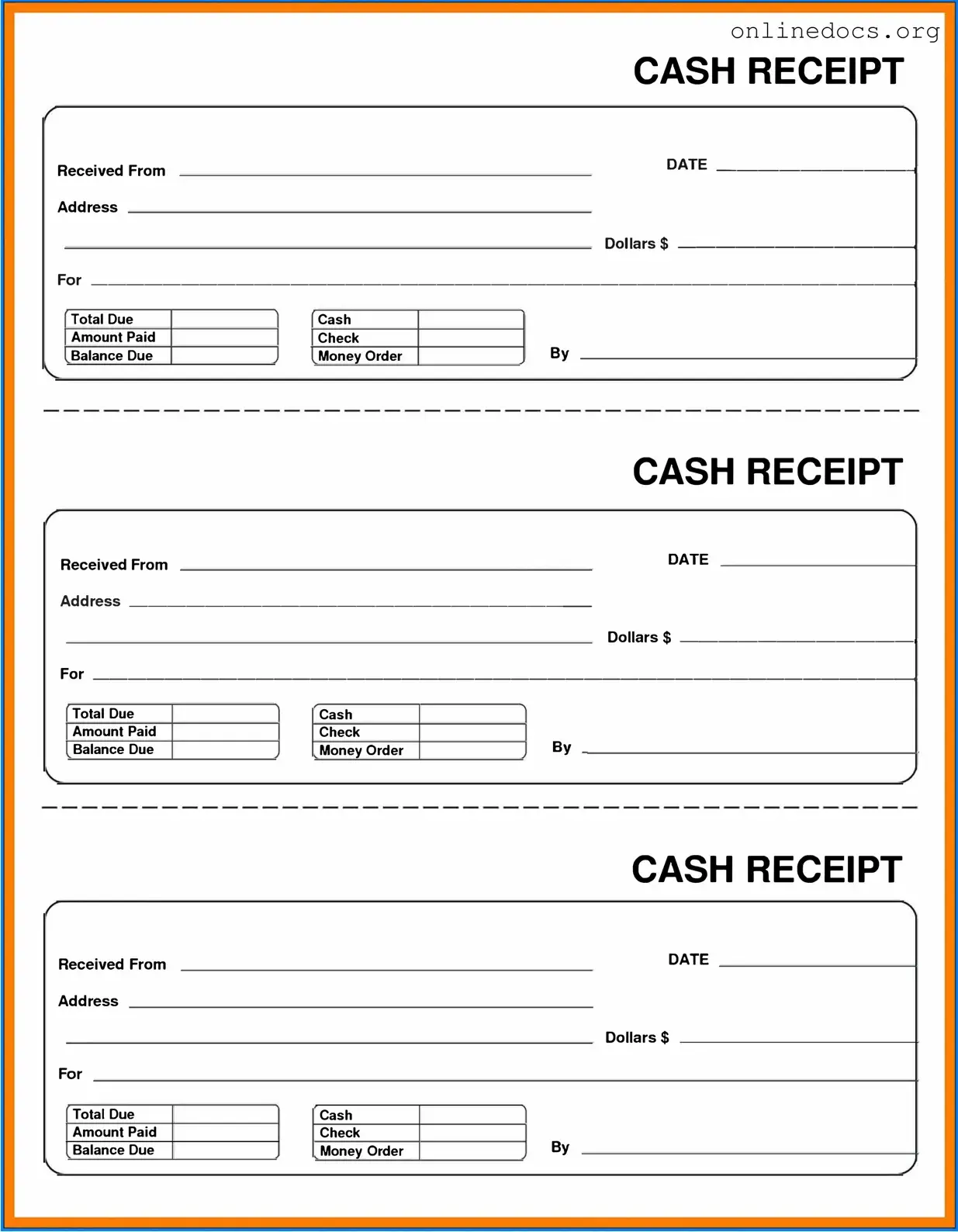The Cash Receipt form is similar to an Invoice. An invoice is a document that lists goods or services provided by a seller to a buyer. It details the amount owed and includes payment terms. While the cash receipt acknowledges payment received, the invoice serves as a request for payment. Both documents are essential for tracking financial transactions, but they serve different purposes in the payment process.
Another document that resembles the Cash Receipt form is the Sales Receipt. A sales receipt is issued at the point of sale, confirming that a customer has made a purchase. Like a cash receipt, it shows the amount paid and the date of the transaction. However, a sales receipt often includes additional details about the items purchased, making it more comprehensive for the buyer’s records.
The Purchase Order is also similar to the Cash Receipt form. A purchase order is created by a buyer to authorize a purchase. It outlines what is being bought and at what price. While a cash receipt confirms that payment has been made, the purchase order initiates the transaction. Both documents play crucial roles in managing finances and ensuring clarity in transactions.
Next, consider the Payment Voucher. A payment voucher is a document used to authorize a payment. It typically includes details about the payment, such as the amount and purpose. Similar to a cash receipt, it serves as proof of a financial transaction. However, the payment voucher is often used before the payment is made, while the cash receipt confirms that payment has already occurred.
The Credit Note is another document that shares similarities with the Cash Receipt form. A credit note is issued when a buyer returns goods or when there is an adjustment in pricing. It indicates that a certain amount has been credited back to the buyer’s account. While a cash receipt shows money received, a credit note reflects a reduction in the amount owed, making both important for accurate accounting.
For those looking to rent property in California, it is essential to have a written California Lease Agreement form to clearly define the terms of the rental process. This document not only specifies the obligations of both the landlord and tenant, but it also ensures protection against potential disputes. To find a comprehensive Lease Agreement that meets legal standards, you can visit legalformspdf.com, where such forms are readily available for use.
Lastly, the Bank Deposit Slip can be compared to the Cash Receipt form. A bank deposit slip is used to deposit cash or checks into a bank account. It provides a record of the funds being deposited. Like a cash receipt, it serves as proof of a financial transaction. However, the deposit slip is used in the banking process, while the cash receipt is typically used in retail or service transactions.
